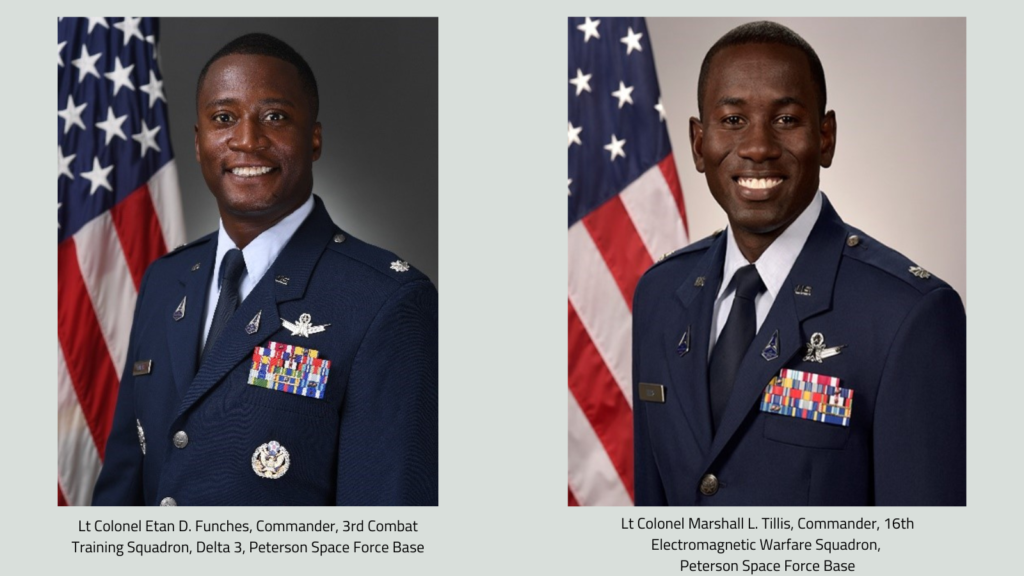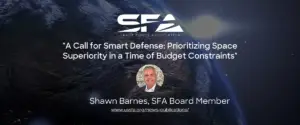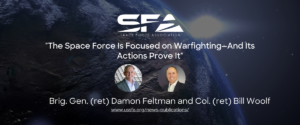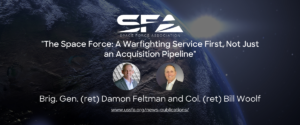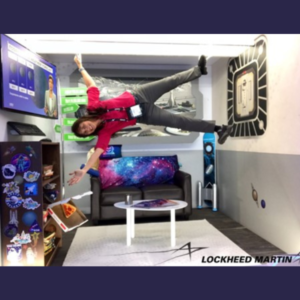By Lt Colonel Etan D. Funches, Commander, 3rd Combat Training Squadron, Delta 3, Peterson Space Force Base and Lt Colonel Marshall L. Tillis, Commander, 16th Electromagnetic Warfare Squadron, Peterson Space Force Base
“The views presented are those of the speaker(s) or author(s) and do not necessarily represent the views of DoD or its Components; no federal endorsement implied.”
Culture is inevitable. It will develop whether we make it a focus or not; therefore, we must be intentional. An organization’s culture is a collection of normalized values, expectations, and behaviors dictated by the unit’s roles and responsibilities. Culture shapes how we execute the mission. The U.S. Space Force’s culture is under construction. Our senior leaders are prioritizing its development as we look to advance our lethality through more creative leadership approaches like mission command.
The Chief of Space Operations (CSO), in C-note #6, espouses that mission command is the “continual cognitive effort to understand, to adapt, and to direct effectively the achievement of intent.” This statement is both a mindset and paradigm shift. Cultivating a culture of mission command is the responsibility of command teams and leaders across all echelons of command. As leaders, we must move beyond mere process-driven solutions and embrace cultural changes across our formations to meet the vision of mission command.
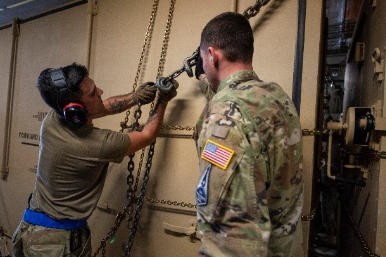
Contrary to what many may assume, effective mission command does not solely rely on process improvements and delegation of authority; rather, it hinges on culture. Establishing decentralized processes and delegating authority will not be enough to maximize mission command. The fact that the U.S. Space Force (USSF) executes mission command is important, but how we execute mission command is paramount. The Joint Chiefs of Staff’s “Insights and Best Practices Focus Paper (on mission command)” explains that “Mission command exploits the human element, emphasizing trust, force of will, initiative, judgment, and creativity . . . successful mission command demands that subordinate leaders at all echelons exercise disciplined initiative and act aggressively and independently to accomplish the mission. They focus their orders on purpose . . . rather [than] . . . how to perform assigned tasks.” To achieve the CSO’s intent, USSF command teams and leaders must make deliberate efforts to normalize a mindset and unit climate that promotes the guardian spirit (culture) of mission command.
As current squadron commanders, mission command has been a highly effective tool within our formations. We have found that implementing a mission command conducive environment requires:
- • Timely and consistent feedback and mentoring
- • Intentional culture development
- • The fostering of creativity through diverse perspectives
These three approaches help to enable the transformations necessary in actualizing mission command within the USSF.
Note: Mission command applies to all leaders; however, this article focuses on command teams. The term “command team” refers to multiple echelons, including space operations crew (crew chief-crew commander), flight level (flight commander and flight chief), and squadron level (squadron commander and squadron senior enlisted leader). Additionally, training, education, and doctrine are critical aspects of implementing mission command culture and competencies; however, this article addresses mission command from the perspective of commanders deliberately empowering a mission command culture within their unit.
Timely and Consistent Feedback and Mentoring
As the CSO points out in C-note #6, mission command is not “fire and forget”. Effective mission command requires command teams to provide more than guidance and intent. With mission command, leaders must continuously mentor and give feedback to subordinate teams to ensure they effectively execute the commander’s guidance and intent. It is not enough to tell members what they did correctly or incorrectly. Feedback is much more effective when paired with mentorship. Feedback assesses the actions of past and ongoing situations, while mentoring provides advice on handling situations. Mission command demands that feedback and mentorship are seamlessly included in the organization’s culture. Timely and candid feedback improves trust, subordinate decision-making, and judgment and enhances a unit’s creativity and adaptability.
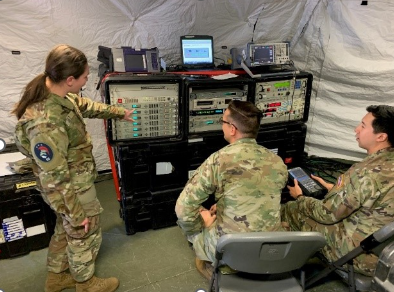
Teams with a climate of candid, timely feedback and mentorship naturally develop high standards as they are more prone to seek rapid and continuous improvements. Many organizations and their leaders only provide feedback and mentorship when mandated (e.g., initial and midterm feedback) or in reaction to a significant event or issue. We have found that young space professionals yearn for actionable and productive feedback. Statements like “keep doing what you are doing” lack substance and leave subordinates with little to no advice on areas for growth and, in some cases, create frustration when formal feedback (EPRs and OPRs) reports are due. This behavior decays trust and stagnates the professional development of subordinates.
Teams with a climate of candid, timely feedback and mentorship naturally develop high standards as they are more prone to seek rapid and continuous improvements.
On the contrary, timely feedback and mentorship improve subordinates’ decision-making and decision-making processes. In turn, effective decision-making promotes mutual trust. When leaders at all levels of mission command demonstrate sound judgment and decision-making, a climate and culture of trust will form. Mutual trust between leaders and subordinates is a requirement for mission command. Highly effective teams have high and reinforced trust between leaders and their subordinates. Our Delta/CC once stated, “don’t worry about getting ahead of me.” Our senior commander’s statement was not only empowering, but it was an expression of trust. This behavior empowers squadron commanders and the entirety of the units under their charge. The inability of senior commanders to foster mission command will create a cascading effect down the chain of command. Leaders must trust that their members will execute effectively, while subordinates must trust that leaders expect and are comfortable with them being aggressive and creative.
It is vital to allow subordinates to use their creativity and operate at an aggressive pace while managing associated risks. If unit commanders monopolize leadership and decision-making, creativity and the unit’s ability to adapt to mission command will slow. Commanders may be tempted to prematurely become directive and take decisions away from subordinates when actions or decisions are not what they would make. Fight this urge. Instead, apply timely feedback and mentorship while preserving the subordinate’s decision authority.
Intentional Culture Development
Culture and climate will be defined by what you tolerate and invest in. When commanders refuse to accept consistent laissez-faire subordinate leadership, toxic behavior, and low performance, they safeguard mission standards and morale. Morale is the heartbeat of culture. Morale and the guardian spirit will NOT be defined by how well command teams appease or pacify their people; instead, it is driven by what we nurture and incentivize. Leaders must intentionally incentivize and brand the values and an identity that aligns with mission command.
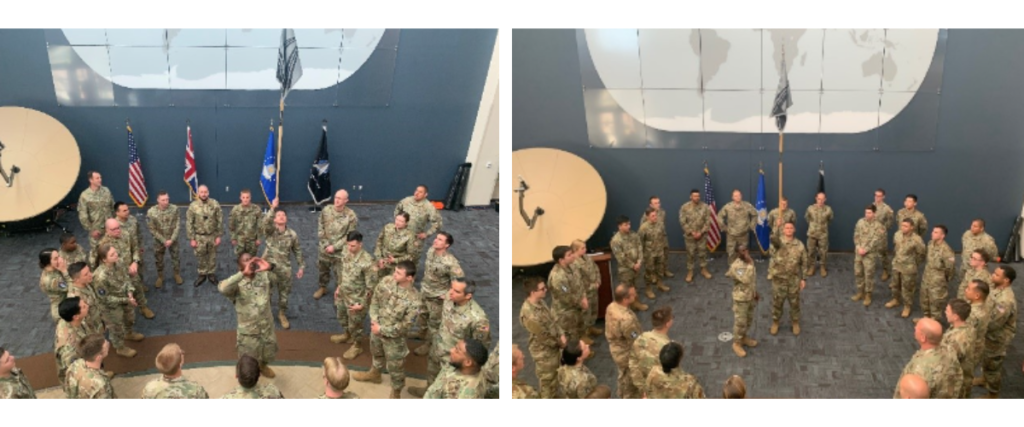
Again, culture is inevitable. It does not need permission to exist. Therefore, leaders must intentionally define and shape a unit’s values, identity, and brand to align with how they want the mission to execute. Mission and culture are inherently connected. Mission types define the roles and responsibilities of the organization, which creates patterns of behavior leading to defined norms. When a “defined” culture does not align with the mission or environment, members will struggle to embrace the culture and mission together. Our guardian spirit must reinforce “how” and “why” one conducts a mission and reflect the expressed values of the organization. Identity is a powerful factor influencing an organization’s willingness and ability to embrace mission command.
An organization’s values shape its identity. People and organizations will naturally invest in what they value. Over time these investments will shape the organization’s internal and external perception (identity). If command teams invest in or incentivize aggressive decision-making, the organization’s identity will begin to reflect these investments. Notably, a unit’s values must align with mission command. Organizations with an aversion to risk and a need to reach a total consensus with a plan before execution likely stall in mission command. These organizational cultures may also avoid performing intelligent risk management or enabling a culture where members operate with a bias for action. Command teams should make every effort to embed values that enhance mission command within their unit. Values help define an organization’s focus and connect members to their “why”—values drive how units achieve their purpose.
Values help define an organization’s focus and connect members to their “why” — values drive how units achieve their purpose.
Unit branding must reflect ownership of unit values and align with mission command. This includes branding values into mission briefings, unit chants, and wall art or displays. Visual and audible cues reinforce identity and one’s connection to the team. What command teams decide to intentionally brand will become engrained and affect how members execute the mission. If your brand does not support the mission command culture, change it. On the surface, branding is how we display our cultural identity, but for our members, it is how we demonstrate and express ownership of the mission. Ownership is vital to mission command; therefore, leaders should embrace and incentivize ownership throughout the organization chain. When every echelon of command displays ownership, innovation, and creativity will likely increase—sometimes drastically. Do not stand in the way. Command teams should continue to provide guidance if needed and highlight the values-driven results of ownership.
Command teams must also intentionally build a culture of mission command by incentivizing decision-making and judgment at all levels. This approach may be as simple as rewarding those who move with a bias for action and solve the most challenging problems with little oversight. Or, it could be as challenging as relieving junior command team members (crew, mission, and flight command teams) and leaders that do not embrace their decision space by exercising effective judgment. We have found that allowing toxicity and consistent trends of not meeting standards slows productivity and morale at all levels. Leaders must treat junior commanders like echelons of command with scoped decision space rather than action officers. Action officers manage and complete specified tasks and often are not given meaningful decision space—they typically recommend decisions to higher authorities. Through mission command, we inherently leverage the delegation of decisions by empowering younger command teams to make decisions at their level.
Creating and communicating decision space for subordinates is essential when exercising mission command. Command teams must be intentional when providing guidance and intent by ensuring members understand the elements that dictate their decision space (delegated authorities, resource constraints, limits, allowable risks, etc.). We have observed young leaders fail to take the initiative simply because leaders needed to empower them to create and make decisions on matters at their echelon. Additionally, we must condition members to request these elements when decision space is not provided or understood.
Fostering Creativity through Diverse Perspectives
America will not judge the USSF on the size of its formations and organization charts but on the size of its impacts on national security. The USSF’s strength is not in its numbers but in the diverse background and talents of its inter-service transfers and new accessions. It is universally accepted that diverse perspectives stimulate creativity and innovation. Guardian command teams (at every echelon) are formed by former soldiers, sailors, marines, and airmen with professional and personal experiences and perspectives. These diverse guardians have an opportunity to leverage and lead a new breed of service members. Commanders must ensure that Guardian perspectives are heard and empowered. Leaders must emphasize a culture of inclusion.
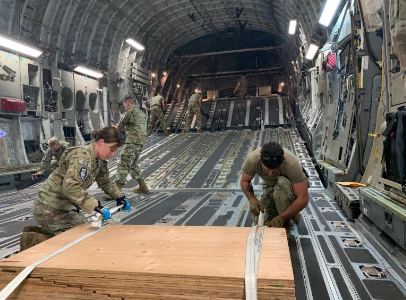
Being diverse is not enough; we must be inclusive to maximize the potential of mission command. We have found that including members at all levels pays dividends in mission command. Guardians in the Space Force have many talents ready to contribute to our mission. It does not matter the rank or position of the guardian; we must embrace their skills and allow them to contribute to organizational success. We must provide them with a platform to think outside the box and join others, pushing the limits beyond the norm.
Moreover, as the USSF implements its inter-service transfer program, leveraging our talents and embracing portions of our varying cultures is a winning solution. At the squadron level, successful inclusion starts with open dialogue. Ask engaging questions, then ask more, then ask–are we just maintaining the current status quo? Or can we leverage our expertise to create something new? Leaders must leverage the diversity of thought from across the formation and promote an inclusive environment to gain the best of all members within the unit–this is inclusion.
Including new ideas will mean commanders take and manage unfamiliar risks. We must embrace this opportunity by trusting and developing our Guardians. Guardians are pleading for a culture where new ideas are accepted and implemented quickly. Consider a command team that listens to ideas, determines if the idea is an improvement, then immediately assigns a member to take action for testing and analysis. New ideas can introduce unfamiliar or unique risks, but we should manage risks associated with their decision space by clearly articulating where allowable risks are and where red lines exist. In mission command, leaders at every echelon must understand their accepted and acceptable levels of risk and communicate it effectively through guidance and intent. This communication will only enhance trust, optimizing the ability of a mission command culture to succeed. Across the Space Force, high-performing teams consistently embrace innovative ideas when risk is accepted. Members from all backgrounds and experience levels run with new ideas without feeling the need to gain permission. They understand risk tolerance and create solutions to make the unit more effective. Arguably, when command teams accept calculated risks and are not afraid of failure, guardian-created solutions can thrive.
When command teams accept calculated risks and are not afraid of failure, guardian-created solutions can thrive.
Command teams must leverage inter-service transfers to catapult a mission command culture. Our transfers bring the best of every other service and help create a melting pot of new ideas. We need to harvest their ideas and talents. The status quo will transform through an infused culture of diverse perspectives and creativity from inter-service transfers. As leaders, we must directly challenge them to improve our organization and functions. Determine the best opportunities to leverage their expertise and challenge the normal. We consistently observe a significant benefit in actively placing transfers into key squadron positions, giving them the flexibility to guide transformational improvements. Command teams should allow these members to create new standards within the established guidelines. We must also explore the cultural differences between the services and shamelessly steal elements of each that support our culture. Through these actions, a culture of inclusion and creativity in mission command will spread throughout the USSF, unleashing our ability to Amplify the Guardian Spirit.
Conclusion
Guardians will build Space Force culture. It is a responsibility we must all own. As our senior leaders promote a vision of mission command, those of us at all echelons of command have an opportunity and responsibility to get it right. Timely and consistent feedback paired with mentoring, intentional culture development, and fostering creativity through diverse perspectives will, without question, help enhance the mission command culture we desire. We are currently in some of the most formative years of cultural development in the Space Force—let’s not miss it by embracing the status quo.
As sitting squadron commanders, we recognize that there are several ways to tackle mission command. At a minimum, this article provides a perspective template for future and current command teams. By starting the conversation and encouraging dialogue at the tactical levels, guardians can set the course of culture across the service. Let us all do our part in creating the service we desire.
We look forward to hearing alternative and shared perspectives.
Semper Supra!
This article was prepared by Lt Colonel Etan D. Funches, Commander, 3rd Combat Training Squadron, Delta 3, Peterson Space Force Base and Lt Colonel Marshall L. Tillis, Commander, 16th Electromagnetic Warfare Squadron, Peterson Space Force Base. The Space Force Association is assisting in the dissemination of this information as part of its mission to promote and support the United States Space Force.
